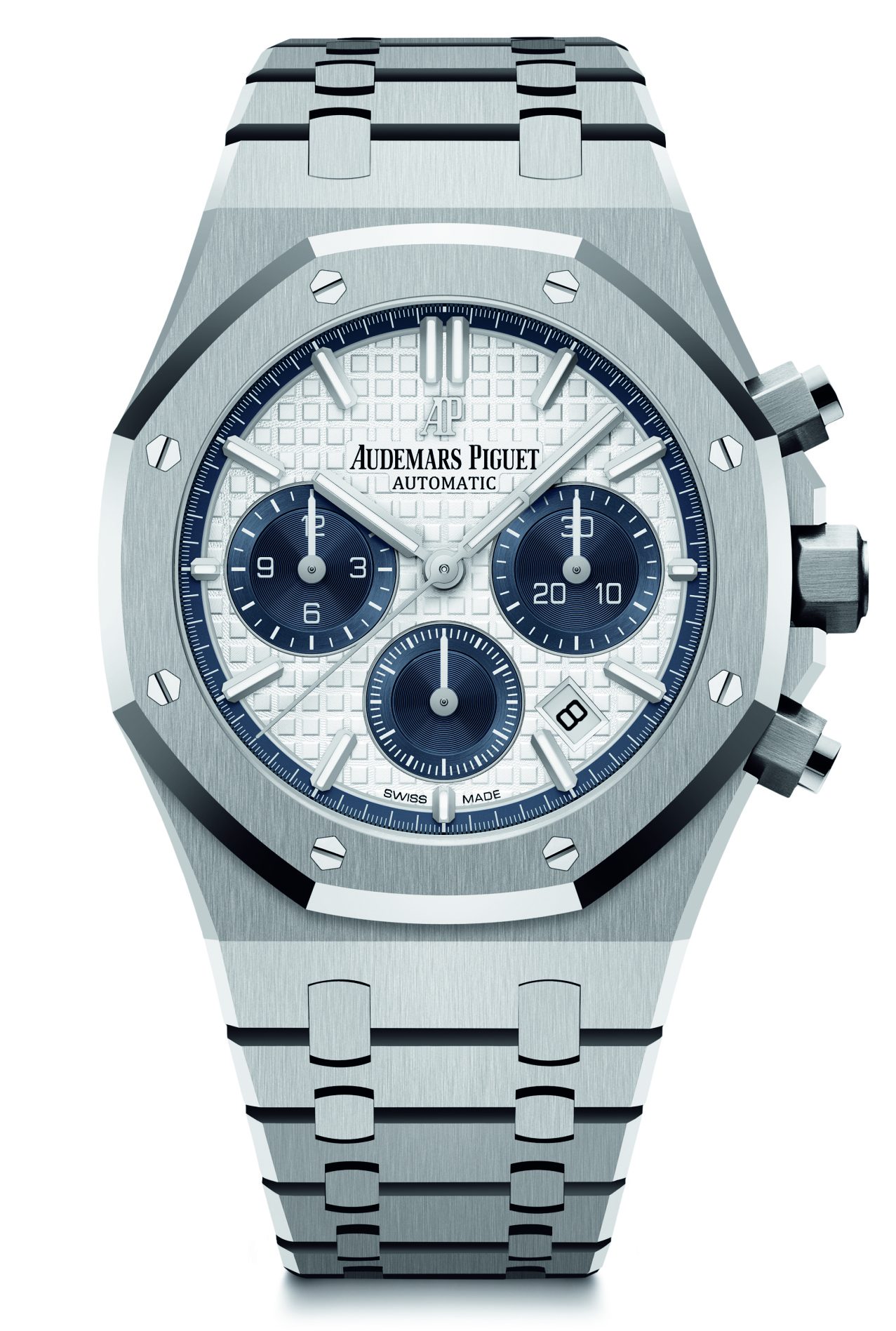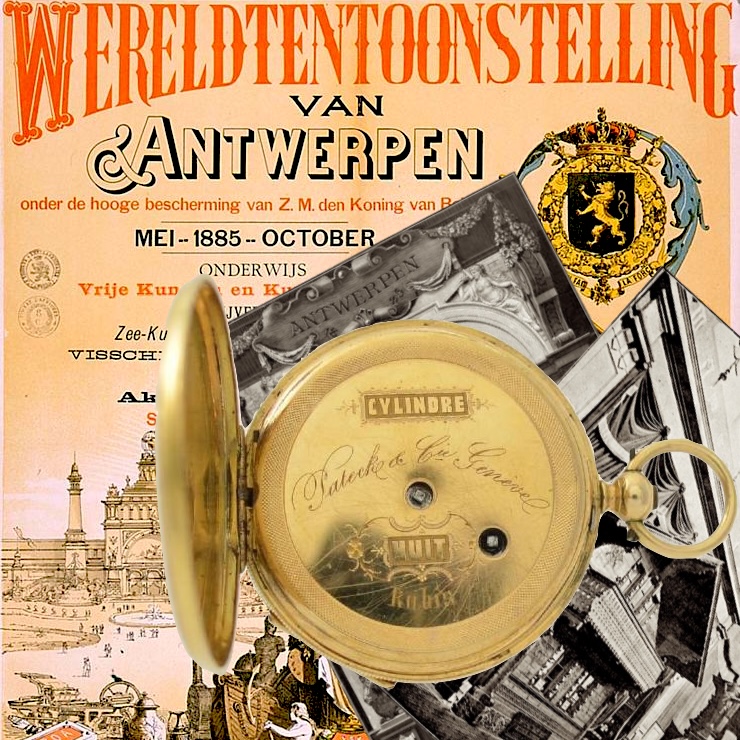On November 7, 1984, Gérald Genta finally went too far. His audacious new watch collection was a scandal at the prestigious Montres et Bijoux and he was forced to remove it from the fair. But history shows that Genta was right again, and his designs laid the foundation of today’s luxury watch industry.

This article accompanies Episode 1 of The Watch Files, a podcast from Europa Star and Grail Watch. Listen to “01 The Day Gérald Genta Challenged the Watch Industry” and subscribe now!
Gérald Genta’s Steel Sports Watches
Ask a watch fan about Gérald Genta and most will mention one of his now-famous signature watches: The Audemars Piguet Royal Oak, the Patek Philippe Nautilus. If they’re really savvy they might instead call out the IWC Ingenieur SL, Omega Constellation, or one of the designs that now make up Bulgari’s Octo range. But Genta’s legacy goes far beyond the innovative steel luxury sports watch!

Image: Europa Star 73, 1972
Gérald Genta first appeared on the watch scene at Universal Geneve, where he worked on the famous “Polarouter” or “Polerouter” model in the 1950s. Over the next decade, he became a go-to designer of jewelry watches, earning awards for his designs for Audemars Piguet and others. From the start, it was clear that Genta saw a watch as a unified whole, not as a “head on a strap” and his unified designs often disregarded the “face first” tradition of watch design.
But, as any watch fan will tell you, it was the 1972 introduction of the Audemars Piguet Royal Oak that sent shockwaves through the industry. Gérald Genta’s design truly integrated the case with the bracelet, and the interplay of octagonal bezel and round dial were unmistakable. Audemars Piguet’s decision to sell the steel Royal Oak for “gold luxury watch” money certainly added to the mystique, especially since the world was then turning towards quartz as a high-end movement. It was clearly the most important introduction at the 1972 Basel Fair: Europa Star featured it as the first watch in their “first flashes” preview! Although there were other “integrated bracelet steel sports watches” before, nothing held a candle to the Royal Oak.

Image: Europa Star 102, 1977

Image: Europa Star Eastern 152, 1976
Genta designed a few other steel luxury sports watches in the 1970s, most with integrated bracelets and wide bezels, but to say that they are related is quite incorrect. Each had a completely different case construction, case shape, and overall look. And most (alas, not including the IWC Ingenieur) have continued in production for decades since.
Perhaps the most remarkable thing about Genta’s 1970s sports watch designs is that this list includes two of the most desirable models today: The Audemars Piguet Royal Oak has gone through many iterations but today’s model is closer than ever to the original and is nearly unattainable today. And Patek Philippe’s steel Nautilus was in such demand that the company recently decided to pull the model from the market!
Gérald Genta’s Own-Brand Watches

Image: Europa Star 102, 1977
In addition to his designs for Audemars Piguet, Patek Philippe, IWC, Omega, and many others, Genta also sold watches under his own name. In the 1970s, most of these had jewels and precious metal cases and were positioned at the extreme highest range of the market.
These continued Genta’s trend of incorporating basic geometric shapes in harmonious and creative ways that and transform the basic shapes of his watches. Even as Genta’s steel designs elevated the world of sports watches, his high-end dress watches set the stage for the 1980s.

Image: Europa Star 171, 1979
Key themes of Genta’s late 1970s jewelry watches included a single center lug and a thin bezel. Many used two-tone (gold and steel) metals and outlined subdials. All of these elements were widely seen on the popular luxury watches of the 1980s from just about every brand.
Another key to understanding Genta’s 1970s offerings was his explicit use of mechanical movements. He often included skeleton dials exposing these decorated marvels, and this instantly set them apart from the widespread use of quartz movements at the time.
Of course, Genta also continued the extravagant use of jewels in his watches. This had been a theme since the 1960s and gave him a seat at the table in major jewelry fairs.
Montres et Bijoux 1985
Hopefully this sets the stage for that auspicious day in 1984. Gérald Genta was truly “the spirit of Geneva” – not just the designer of steel sports watches but the most important designer of high-end jewelry watches in the early 1980s.

Image: Europa Star Eastern Jeweler 175, 1980
The Salon Montres et Bijoux was the ideal venue for Gérald Genta. Although not well-remembered today, this was the high-end counterpart to the Basel Fair, showcasing the best watches and jewelry on offer. The show originated in Geneva in 1942, expanding to encompass the entire jewelry watch industry in the 1970s and 1980s. And it was a traveling show, visiting world cities like New York, Paris, Rio de Janeiro, Tokyo, and Hong Kong.
Read more about Montres et Bijoux in this Retrospective by Serge Maillard
Gérald Genta selected this as the ideal venue to introduce his new vision for luxury watches: Pop culture-inspired pieces featuring characters including the Pink Panther, Popeye, and Mickey Mouse!

Europa Star Club members can read contemporary coverage of that fateful day at Montres et Bijoux in this 2020 article by co-host Serge Maillard
Perhaps this does not seem too controversial today, but this was positively radical at the world’s premiere jewelry watch show in 1984! The Swiss industry was reeling from the impact of quartz and the resulting rise of competitors from Japan and Hong Kong.

Image: Europa Star 138, 1983
Even though the low end of the market was now dominated by Seiko, Citizen, Casio, and the rest, high-end Swiss jewelry watches had remained apart in a market of their own. They simply could not comprehend a combination of low and high culture. And yet it was nothing that had not already happened in the world of art, couture, architecture, music, and literature. Genta’s Pink Panther was no more radical than Andy Warhol’s Campbell’s Soup Cans, Paco Rabanne’s metal dresses, or The Velvet Underground and Nico. But it was unacceptable to the stunned jewelry watch industry.
Watches As Art
“There is no longer any room at ‘Montres ex Bijoux’ for an artist with something to say,” said Genta at the time. And this was certainly true at the time. But Genta’s concept wasn’t just to create a “de luxe Pink Panther watch.” Rather, he was staking a claim as an artist, not just a designer of watches. And if anything has served as the foundation for the modern watch industry it is this revelation: Haute horology is art and watchmakers are artists.
This article accompanies Episode 1 of The Watch Files, a podcast from Europa Star and Grail Watch. Listen to “01 The Day Gérald Genta Challenged the Watch Industry” and subscribe now!






Leave a Reply